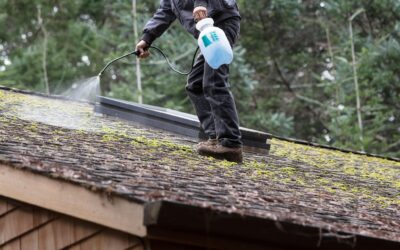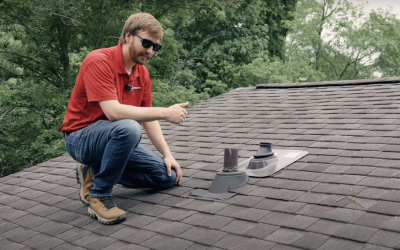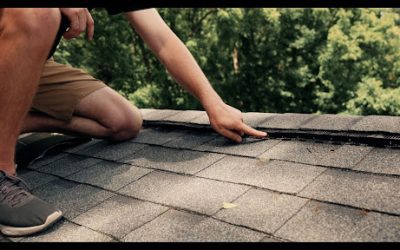Understanding Roofing Costs: Factors That Influence Pricing
How much can you expect to pay for a new roof in Indiana? Roofing costs can vary significantly depending on various factors. Whether you’re repairing a damaged roof or installing a new one, understanding these influences can help you budget effectively and make informed decisions. Let’s explore the key factors that influence roofing costs and how they impact pricing.
Material Costs
When considering a roofing project, your choice of material significantly impacts the overall cost. There are several types of roofing materials, each of which varies in price, aesthetics, and longevity. The most common roofing materials include:
- Asphalt shingles: These are the most common and most economical roofing materials. They’re available in various colors and styles, and they can complement a range of home designs. However, they may not be the most durable or long-lasting option, so they’ll need to be replaced every 15 to 30 years.
- Metal roofing: While more costly upfront, metal roofs are known for their durability and long lifespan, which can extend up to 50 years or more. They are also fire-resistant and largely maintenance-free.
- Clay or concrete tiles: These roofing materials are highly durable and can withstand extreme weather conditions, making them ideal for certain climates. The aesthetics of clay or concrete tiles can provide a distinctive look to a home. The downside is that they are among the most expensive roofing materials.
Factors That Influence Material Costs
Several factors contribute to the cost of each material. Higher-quality materials will generally cost more, but they also last longer and can withstand severe weather better. Consider whether a more expensive and durable option could save you money in the long run in maintenance and replacement costs.
The cost of materials can also be affected by their availability locally. If a product has to be sourced from farther away, transportation costs can drive up the price. Locally available materials may also be more affordable and sustainable. The material choice for your Indiana roof has a major influence on roofing costs. Weigh the initial costs with your chosen material’s lifespan and maintenance fees.
Roofing Costs for workforce: Labor and Installation
Labor and installation costs are a big part of your total roofing price. Hiring professional roofing contractors may seem like an added expense, but the quality of their work can save you from long-term costs associated with improper installations.
The Role of Professional Roofing Contractors
Professional roofing contractors are trained and experienced with roof installation projects and repairs. Their expertise ensures that the job is done right the first time, preventing potential issues down the line. They can also offer guidance on the best materials and methods for your specific roofing project.
Factors Impacting Labor and Installation Costs
Some factors that impact the total labor and installation costs include:
- The complexity of the roof design: More complex designs require more time and skill to install, which can raise labor costs. Simple, straightforward designs, on the other hand, usually command less expensive installation fees.
- The time and effort required for installation: If the installation process requires more time or is particularly strenuous due to factors like steep slopes or tight spaces, labor costs will likely be higher.
Roof Size and Complexity
Although it may seem obvious, the size of your roof and the complexity of its design will contribute to the total cost of its replacement. Put simply, the larger your roof, the more materials will be needed and the longer the installation process will be. Both of these factors contribute to higher costs.
Complex roofs with features including multiple levels, unique shapes, or steep slopes can require special materials and techniques. This will drive the price of your roof installation higher.
Geographic Location
Your geographic location plays a significant role in roofing costs as well. Local market dynamics, including the demand for roofing services and competition among providers, can influence pricing.
Labor and material prices can also vary significantly by region. For example, rural areas might have lower labor costs but higher transportation costs for materials. Local market dynamics, including the demand for roofing services and competition among providers, can influence pricing.
If you’re in Avon, for example, you can explore the range of roofing services available in Avon to get a better understanding of the options and pricing in your area.
Additional Factors
Roofing accessories and add-ons are additional features that will increase the price of your roofing project. Skylights, chimneys, and gutter systems will increase the price due to the cost of labor and added materials.
The potential maintenance and repair costs of different roofing materials should also be considered since some materials require more frequent upkeep than others.
Get the Best Value on Roofing
Many factors influence roofing costs. Material and labor costs are the biggest components, but the size and complexity of your roof, your geographic location, and other elements can also impact the final price.
By understanding these factors and obtaining multiple quotes from reputable contractors, you can make informed decisions and ensure that you get the best value for your investment. Remember to prioritize quality and durability to avoid costly repairs or replacements down the line.
Need expert guidance on roofing costs?
Our professionals provide personalized advice tailored to your specific project needs and budget constraints. Don’t navigate roofing expenses alone – let us help you make informed decisions for your home.











